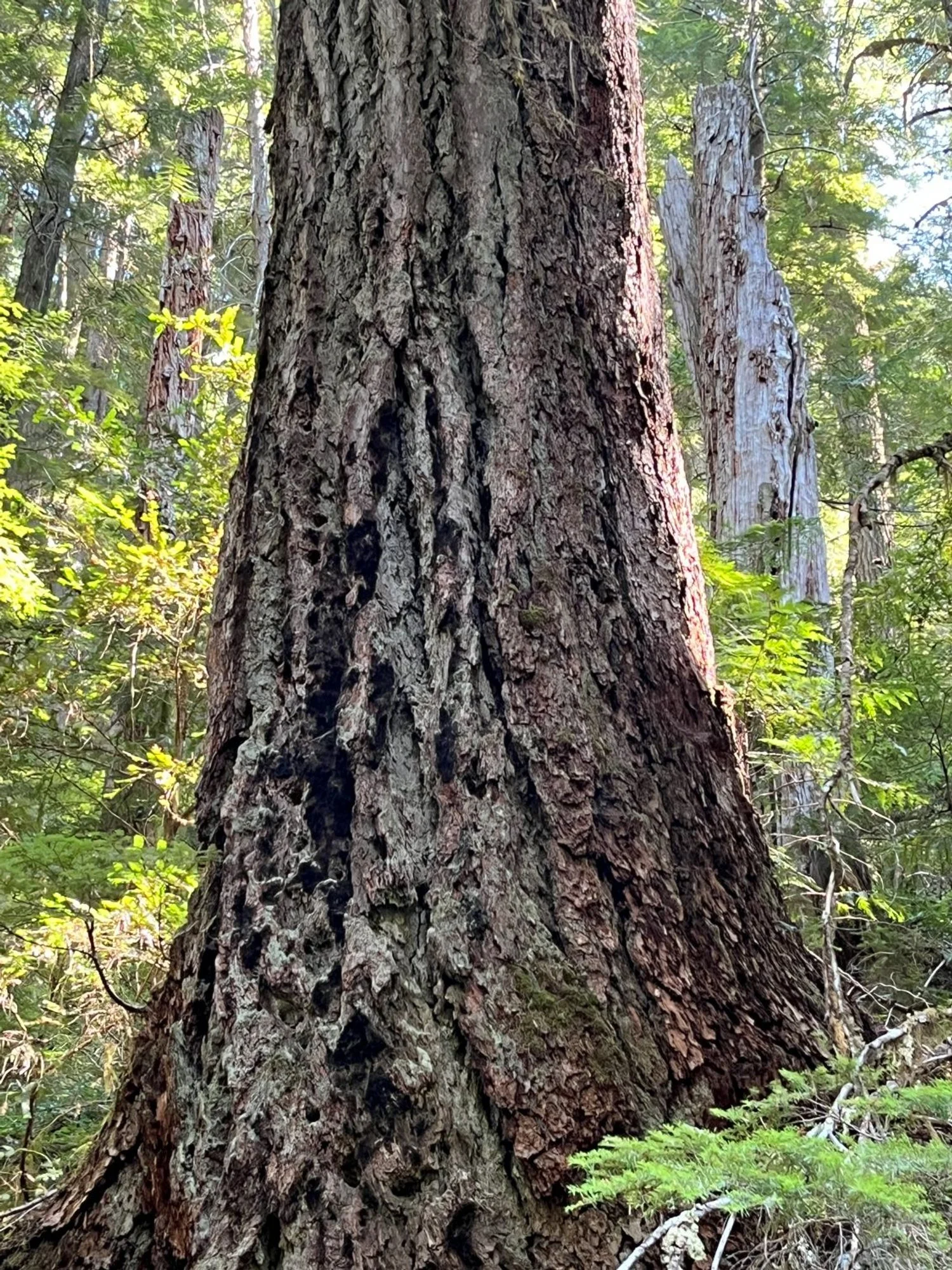
44. Hot Springs Fork
Summary
Length 3 miles one way (1.4 miles to Bagby Hot Springs), can be extended
Difficulty Moderate
Season Spring to autumn
Elevation range 2,080 – 2,530 feet
Human imprint Very high to hot springs; minimal beyond hot springs (Wilderness)
Information Mount Hood National Forest (Clackamas River Ranger District)
Primary old growth features
Classic low-elevation old growth with clusters of enormous, ancient Douglas-fir.
Description
The Bagby Hot Springs Trail (544) parallels the course of Hot Springs Fork Collawash River, one of three major streams draining the north side of the Bull of the Woods Wilderness. Hikers can enjoy attractive old growth in an easy streamside stroll to the hot springs, or venture further up Hot Springs Fork to sample pockets of ancient Douglas-fir over 500 years old. The ambience of the hike changes markedly beyond the hot springs, taking on more of a wilderness character as visitor use drops off rapidly.
Bull of the Woods Wilderness was established in 1984 as one of the last unfragmented, low-elevation old-growth forests left in the southern end of the Mount Hood National Forest, and expanded to its current boundary in 2009. Unfortunately, the Bull of the Woods Complex Fires (2010) and the Bull Complex Fires (2021) burned severely over most of the southern part of the wilderness converting large areas of old forest to young snag-filled forest. Fortunately, most of Hot Springs Fork watershed was unaffected by the fires.
Most visitors are headed to Bagby Hot Springs, a very well-used and rustic spot about 1.4 miles up the trail. One of the public bathhouses reopened in 2024 after being closed for several years, and renovations are continuing. A $5 fee payable at the trailhead is required to use the hot springs, though hikers that are not stopping for a soak can park at the trailhead for free.
The first segment of the hike up to the hot springs is an easy stroll through beautiful low-elevation old growth, though foot traffic on the path can resemble a city sidewalk on weekends. The forest features Douglas-fir and western hemlock 3 to 4 feet thick and 300-350 years old, with occasional large western redcedars. There is a notable cluster of much larger and older Douglas-fir near the bridge before the hot springs, continuing to just past the springs.
Visitor use drops off rapidly above the springs, although there are several large, well-used streamside campsites between the hot springs and aptly named Shower Creek. This tiny tributary drops over a trailside rock face giving well-positioned travelers another refreshing, though much cooler, soaking. The falls at Shower Creek are delightful, and well worth a rest stop.
Around Shower Creek and up to just beyond Spray Creek stands another cluster of exceptionally large Douglas-fir. These giants are scattered across the hillside, some reaching 6-7’ in diameter or more. Besides enormous girth, these survivors often feature deep-furrowed bark; huge duff mounds around the base of the trees; large, gnarly side-branches; and/or broken tree crowns.
The trailside forest becomes more varied beyond this point, veering in and out of pockets of forest recovering from a 1990 blowdown event. Trees are also smaller on some of these less productive sites farther from the stream and riparian area.
For those interested in a longer hike, the trail reenters a long unbroken stretch of old forest near Betty Creek. A formerly outstanding old western hemlock forest further up the trail near Silver King Lake burned severely in the Bull Complex Fire (2021).
30 Years of Change
The old forest appears largely unchanged, though the young forest in the old blowdown areas is rapidly filling in. The Bull Complex Fire (2021) consumed the old growth at the upper end of the trail around Silver King Lake.
How to get there
Turn right onto the Collowash Road (FR 63) from the Clackamas River Highway (FR 46) approximately 29 miles southeast of Estacada. Approximately 3½ miles later turn right onto Bagby Road (FR 70). Park on the left in the Bagby Hot Springs parking lot in 6 miles.

Western redcedar and Douglas fir old growth
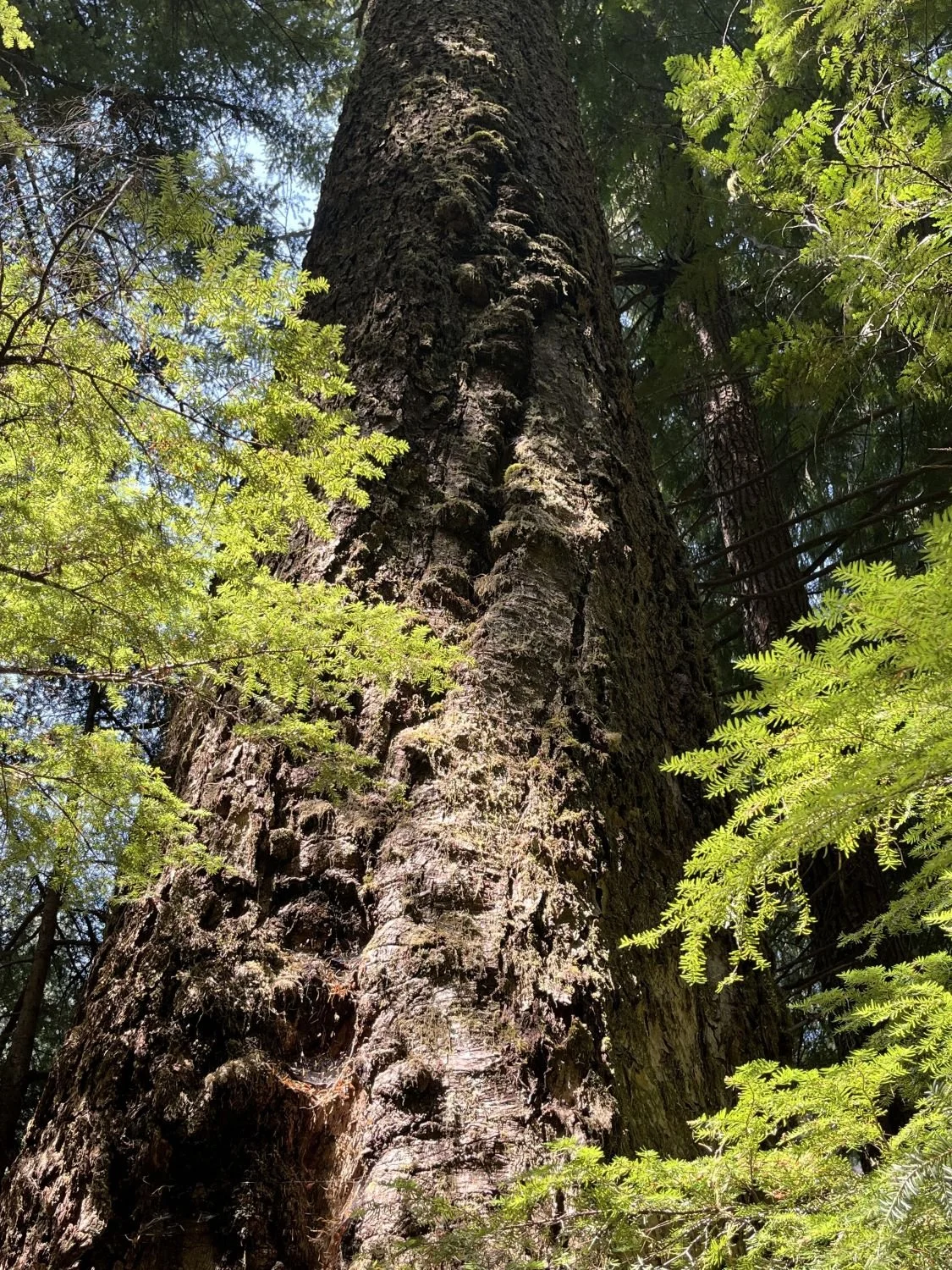
A towering giant
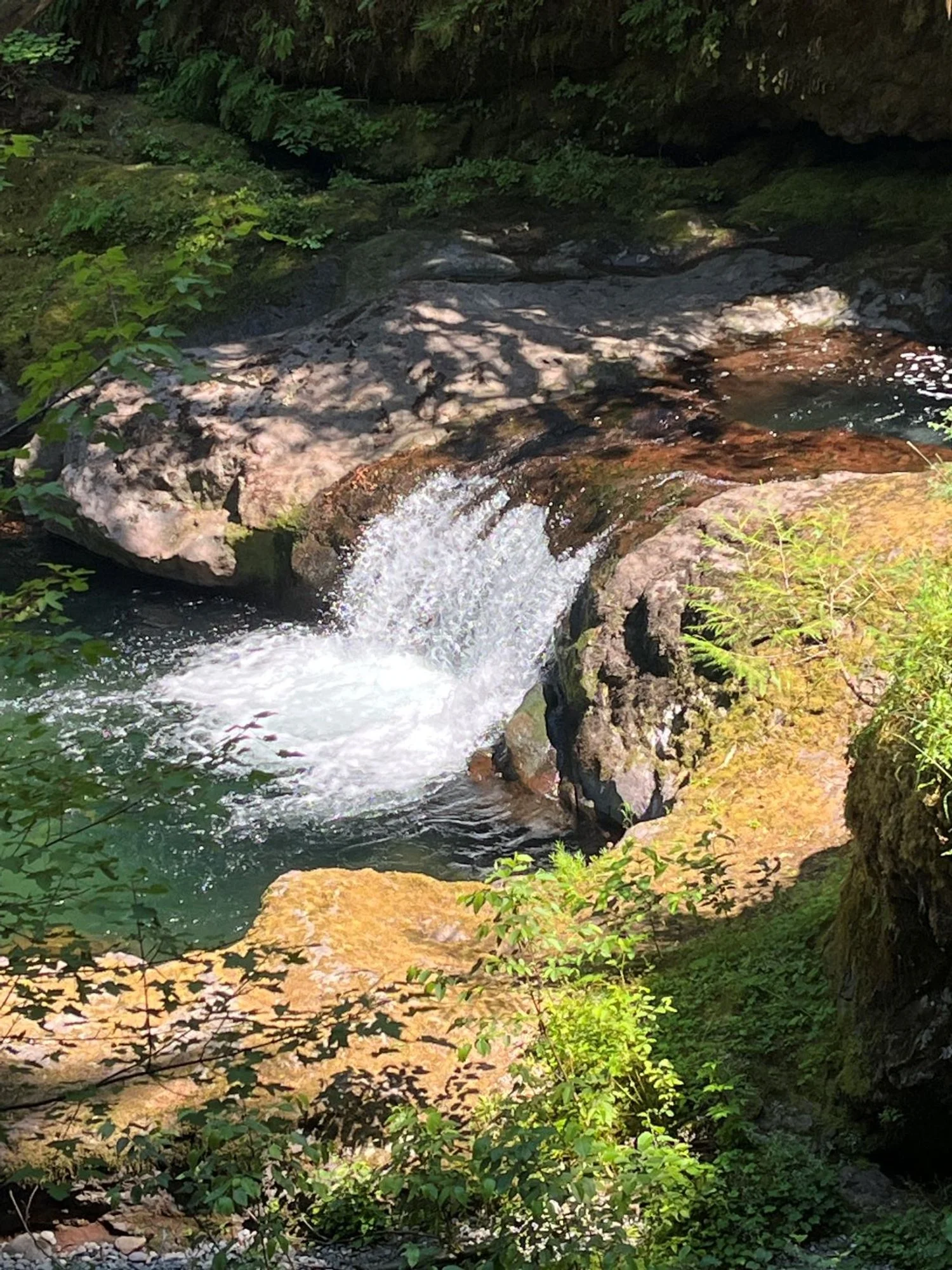
Beautiful unnamed falls
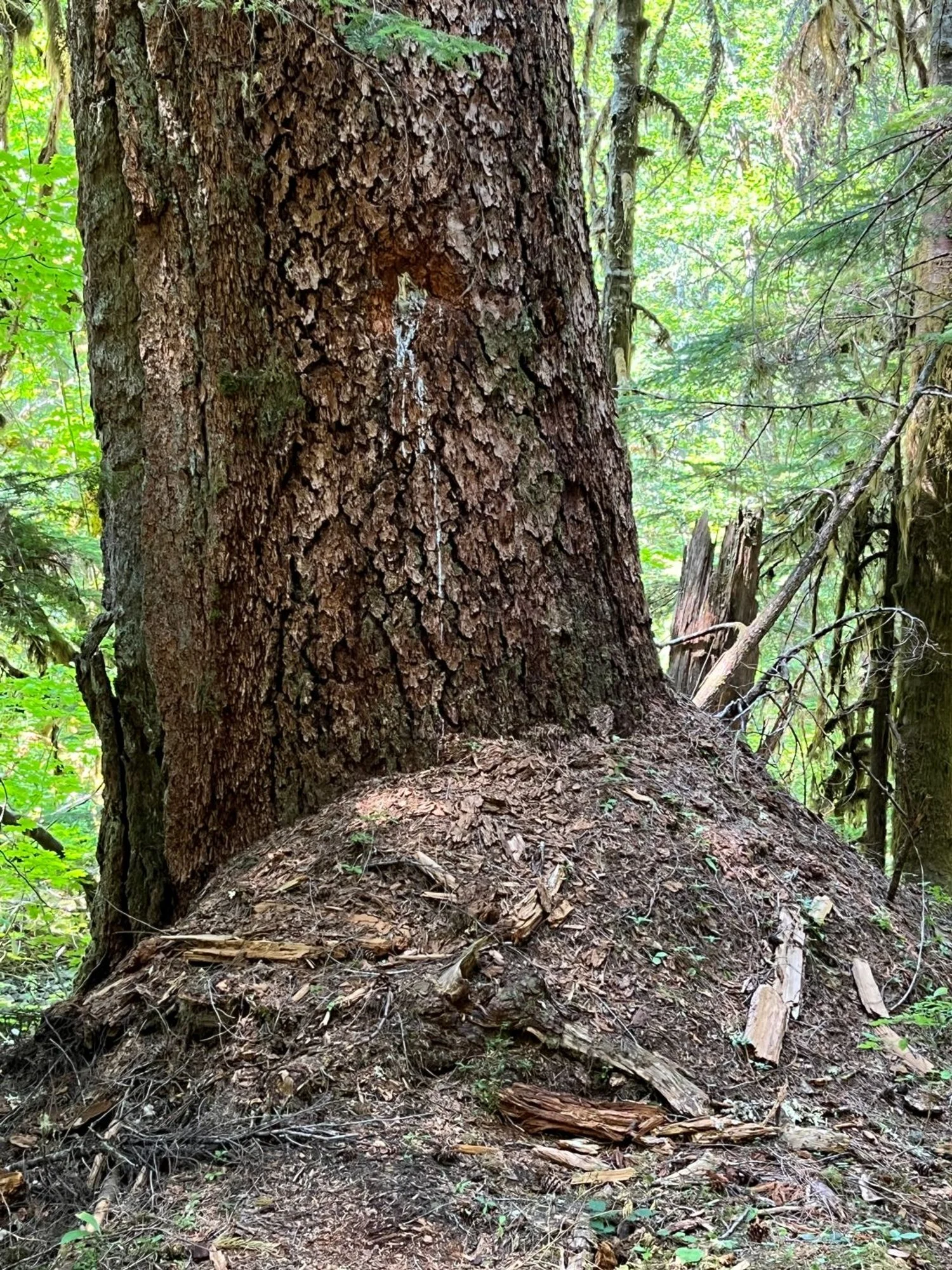
Giant duff-mound around giant Douglas-fir
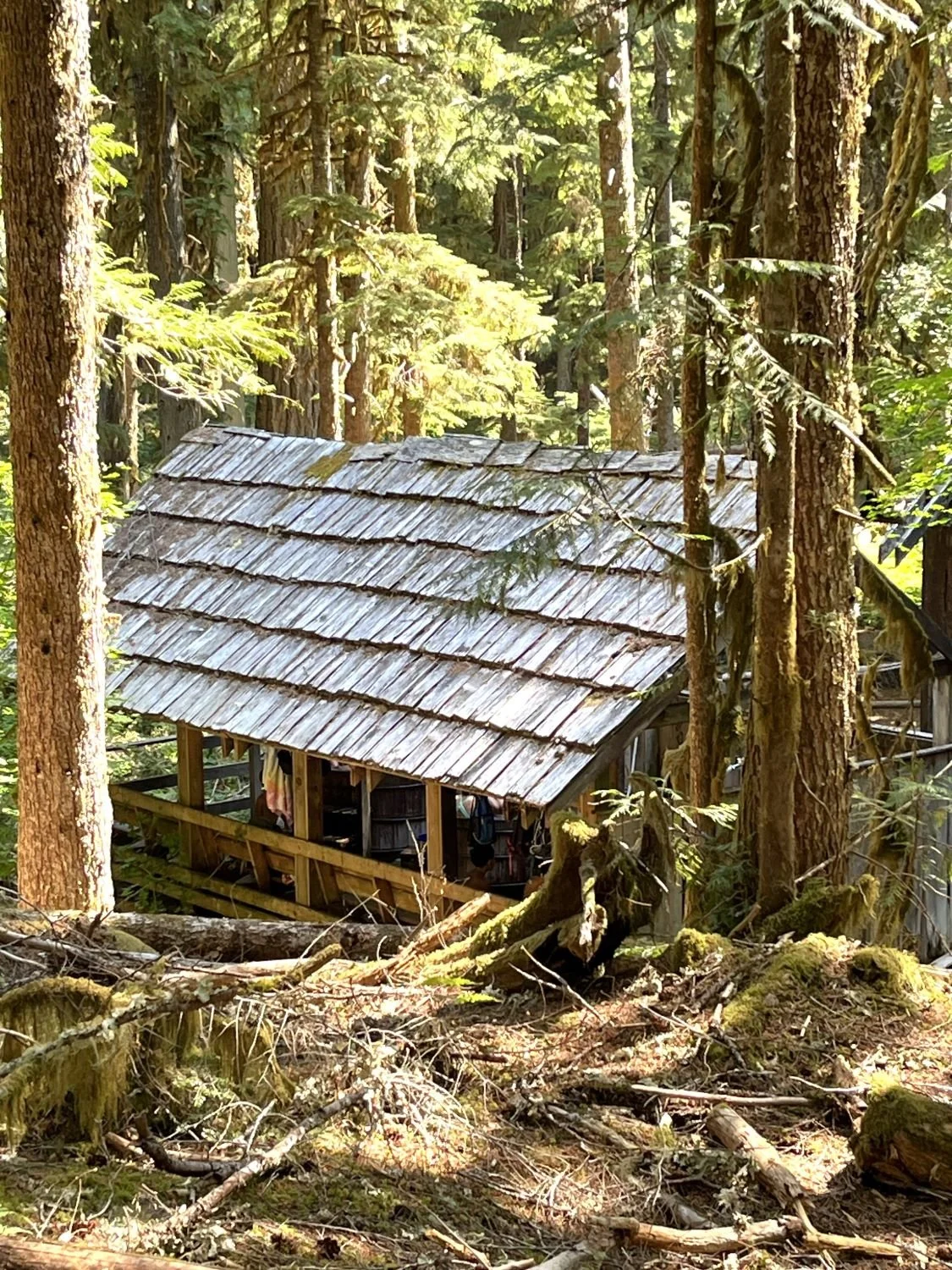
Bagby Hot Springs bathhouse
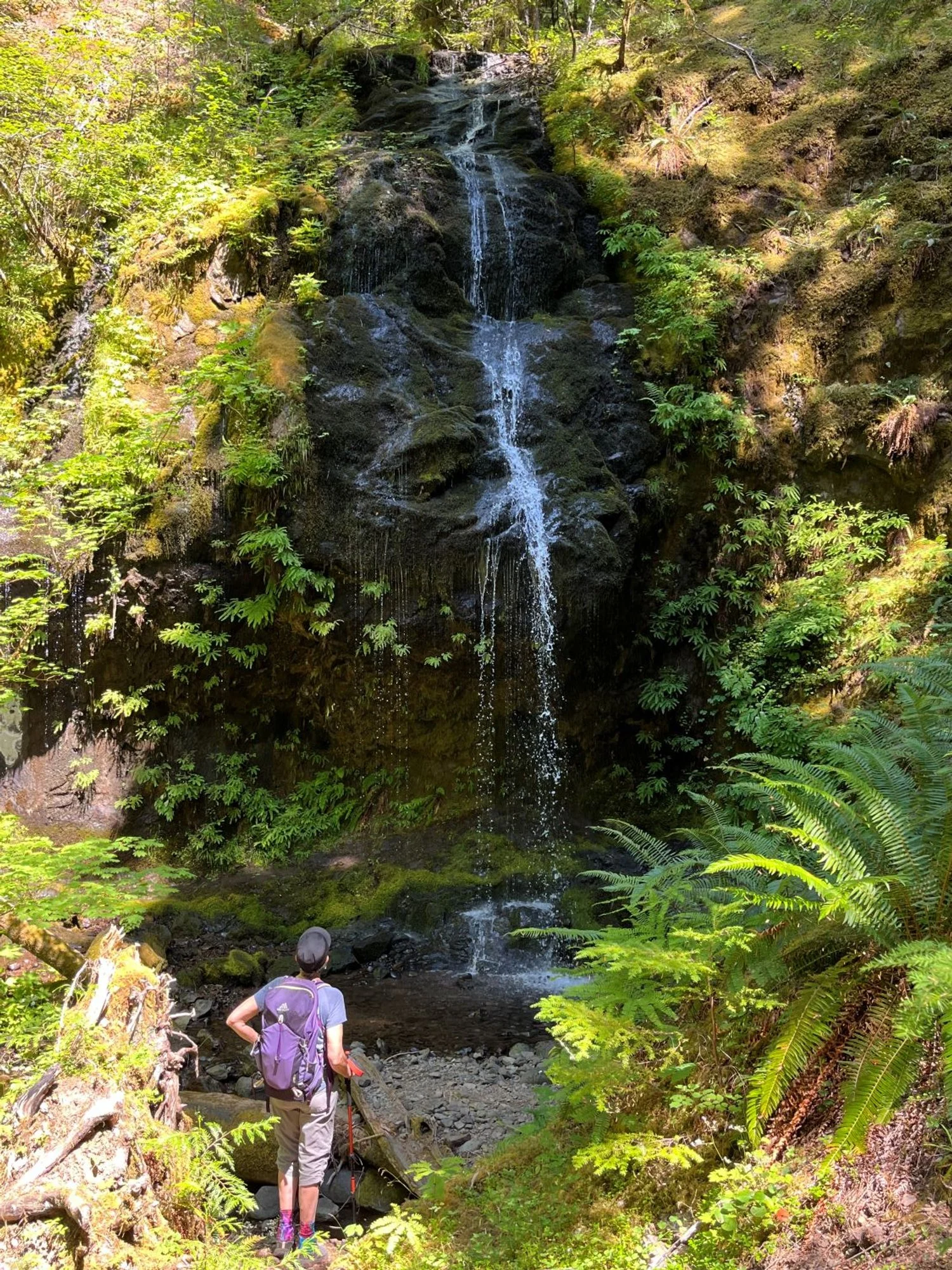
Shower Creek Falls
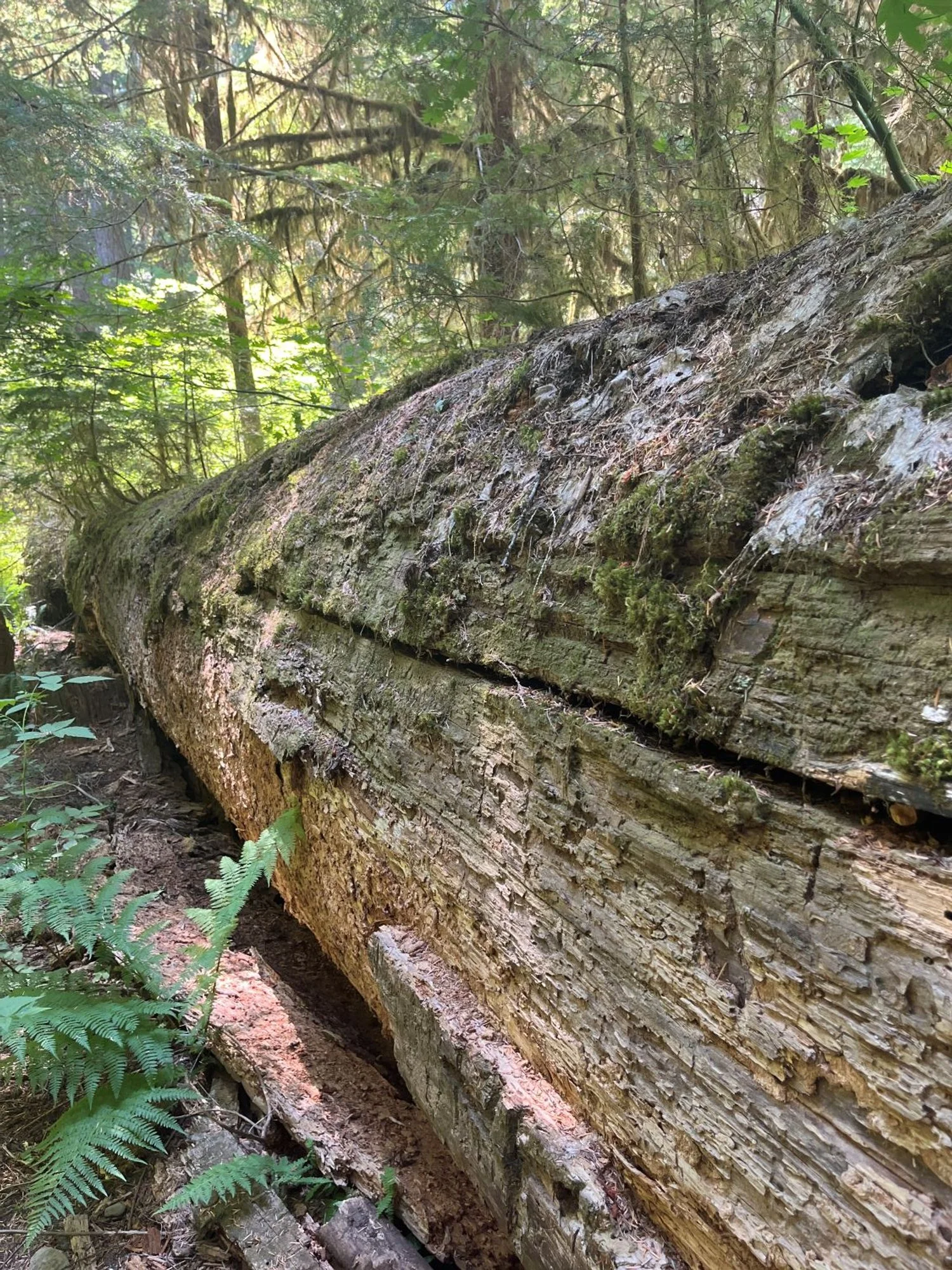
Massive down log
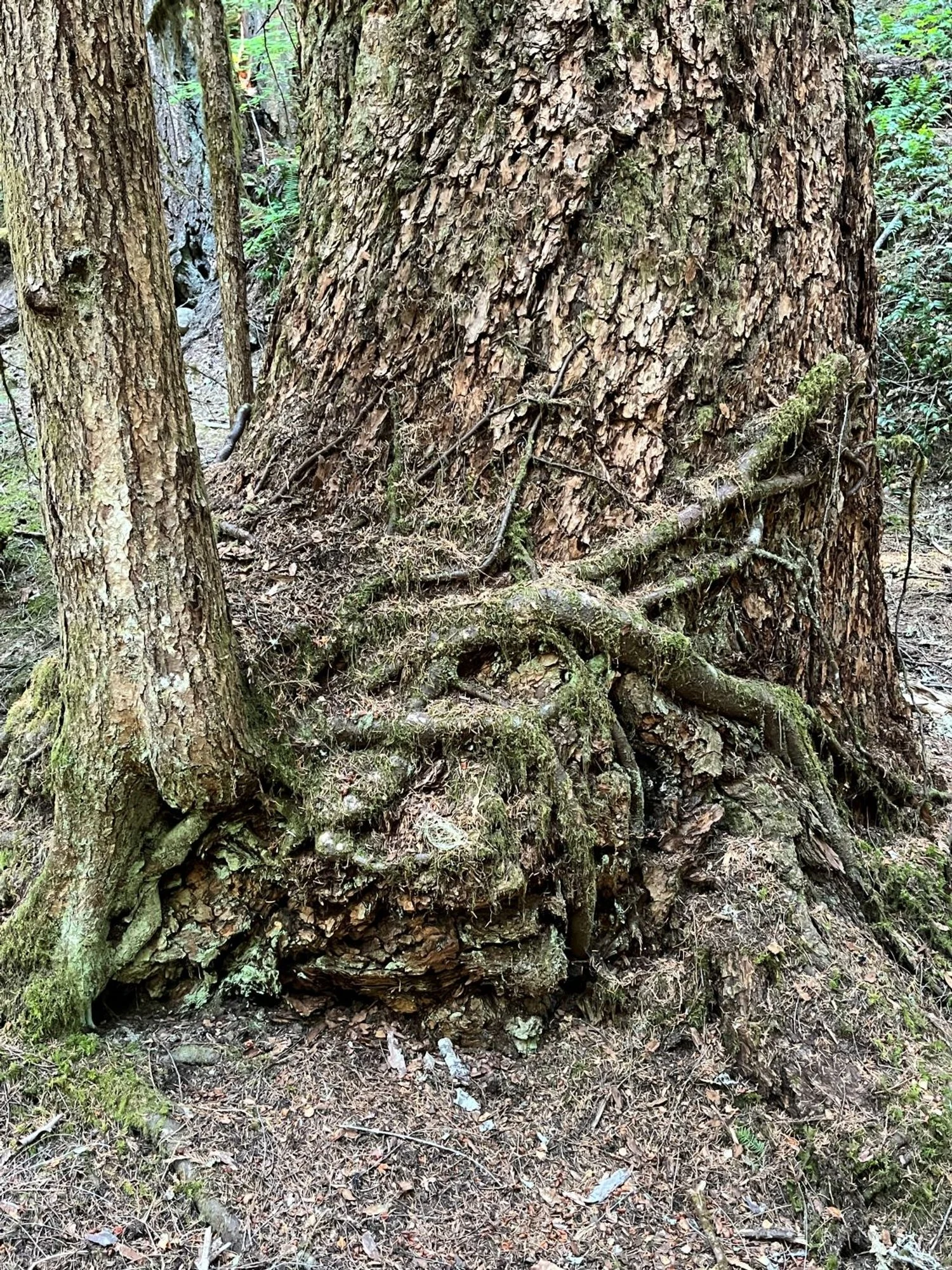
Western hemlock holds on ...
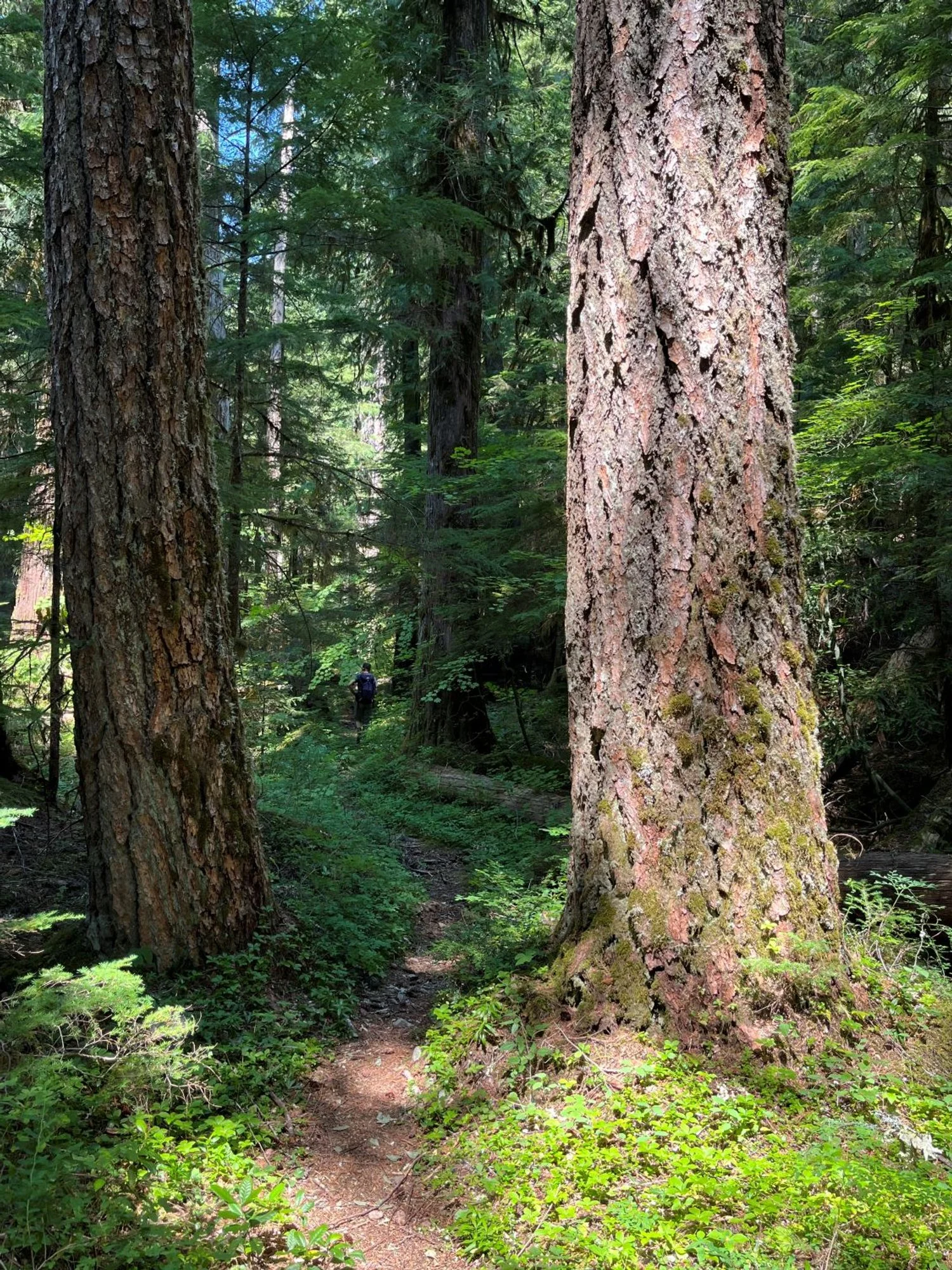
A trail runs through it
